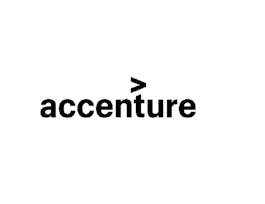Dyslexia is everywhere, touching so many children and adults, and while science has made extraordinary progress in understanding and clarifying the condition, this incredible powerful knowledge rarely reaches those who most need to know and would greatly benefit from it. Our goal is to change all this with the course you are about to view, produced by Dr. Sally Shaywitz, the Audrey G. Ratner Professor in Learning Development, both the leading scientist studying dyslexia and the most devoted advocate for helping those who are dyslexic.

Offrez à votre carrière le cadeau de Coursera Plus avec $160 de réduction, facturé annuellement. Économisez aujourd’hui.


(876 avis)
Expérience recommandée
Ce que vous apprendrez
Understand the latest progress being made in dyslexia research
Acquire practical skills, interventions, and strategies to enable anyone dyslexia to overcome their difficulties and thrive in life and in school
Learn the three relevant federal statutes affecting interventions and accommodations for dyslexic students: IDEA, ADAAA, and section 504
Compétences que vous acquerrez
- Catégorie : Education
- Catégorie : Learning
- Catégorie : READING
- Catégorie : Law
- Catégorie : Dyslexia
Détails à connaître

Ajouter à votre profil LinkedIn
8 devoirs
Découvrez comment les employés des entreprises prestigieuses maîtrisent des compétences recherchées


Obtenez un certificat professionnel
Ajoutez cette qualification à votre profil LinkedIn ou à votre CV
Partagez-le sur les réseaux sociaux et dans votre évaluation de performance

Il y a 9 modules dans ce cours
In module one, we’ll cover the basics. What is dyslexia? What is reading? How does a dyslexic reader differ from an “automatic” reader? We’ll take some time to talk about the 100+ year history of dyslexia and reveal how much progress modern science has made in understanding what goes on in the brain of a dyslexic reader.
Inclus
10 vidéos4 lectures1 devoir
How does one know if they, or their child, is dyslexic? Module two examines the origin of the difficulties in dyslexia: getting to the sounds of spoken language. . We’ll talk about the paradox of dyslexia: a circumscribed deficit in decoding surrounded by a sea of strengths in higher cognitive function. We’ll examine when, how, and why to begin screening and testing children for dyslexia and what signs primary caretakers and teachers should be on the lookout for in their children and students at risk for dyslexia.
Inclus
7 vidéos1 devoir
Here we examine the many facets of providing the most effective interventions for dyslexic children. Included are interventions for the beginning reader such as teaching phonemic awareness and phonics. Teaching fluency, vocabulary and comprehension follow as well as strategies that encourage and preserve the child’s self-esteem. Throughout we emphasize the critical importance of employing evidence-based interventions.
Inclus
9 vidéos1 devoir
We survey and examine public schools, independent schools and schools specialized for dyslexia and when parents of dyslexic children might consider changing their child’s current school. The pros and cons of each type are examined with an emphasis on choosing a school where the climate for dyslexic children is welcoming. Two private independent schools and a public charter school specialized for dyslexia are examined In depth, focusing not only on their reading programs but how these specialized schools preserve and protect the dyslexic child’s self-esteem, promising and most often fulfilling the dyslexic graduate with an opportunity to succeed in high school, college and in life.
Inclus
9 vidéos1 devoir
Here we use life histories of dyslexic individuals to illustrate how despite their difficulty in reading, by using their sea of strengths and incredible resilience, dyslexics can and do succeed in a wide range of careers and professions. Beginning in adolescence, a focus on academics and organizational skills paves the way to success in college and their perseverance and creativity auger well for their success in the workplace. Through the stories of successful dyslexics we emphasize how critical it is that dyslexic children and young adults know that they can succeed and should be encouraged by their parents, teachers and guidance counselors to pursue their dreams.
Inclus
8 vidéos1 devoir
Anxiety and ADHD are the most common comorbid disorders co-occurring with dyslexia, anxiety observed in nearly all and ADHD seen in half of children and adults with dyslexia. Through two case histories the subtypes of anxiety (including social anxiety and panic disorder) and the subtypes of ADHD (inattentive, hyperactive-impulsive, combined) as well as their symptoms are reviewd. Effective pharmacologic and non-pharmacologic interventions (cognitive behavioral therapy, CBT, and mindfulness) are reviewed. We emphasize the critical importance of recognizing and treating comorbid anxiety and ADHD in the child and adult with dyslexia.
Inclus
4 vidéos1 devoir
Dyslexic students and dyslexic adults have come to depend on using technology within a framework of critical accommodations to allow them to succeed not only in school but in their careers and professions. We focus as well on the use of text to speech technology and the accommodation of partial waivers for the foreign language requirement in college and graduate school. In particular we review the rationale including the neural basis for the life-changing accommodation of extra time, especially critical for high stakes, gate-keeper standardized tests.
Inclus
8 vidéos1 devoir
In these lessons we note the federal definition of dyslexia as “an unexpected difficulty in reading for an individual who has the intelligence to be a much better reader” and review three relevant federal statutes affecting interventions and accommodations for dyslexic students: IDEA, ADAAA, and section 504. We note the concept of condition, manner and duration as detailed in the ADAAA and in the DOJ Final Regulations of that law. We review how the ADAAA has been applied in cases of dyslexic medical and law students requesting accommodations and how dyslexic applicants for high stakes standardized tests no longer suffer the effects of flagging their scores as invalid.
Inclus
9 vidéos1 devoir
Inclus
1 vidéo
Instructeurs


Offert par
Recommandé si vous êtes intéressé(e) par Research

University at Buffalo

Arizona State University

Johns Hopkins University

Accenture
Pour quelles raisons les étudiants sur Coursera nous choisissent-ils pour leur carrière ?




Avis des étudiants
Affichage de 3 sur 876
876 avis
- 5 stars
88,71 %
- 4 stars
8,57 %
- 3 stars
1,35 %
- 2 stars
0,90 %
- 1 star
0,45 %

Ouvrez de nouvelles portes avec Coursera Plus
Accès illimité à plus de 7 000 cours de renommée internationale, à des projets pratiques et à des programmes de certificats reconnus sur le marché du travail, tous inclus dans votre abonnement
Faites progresser votre carrière avec un diplôme en ligne
Obtenez un diplôme auprès d’universités de renommée mondiale - 100 % en ligne
Rejoignez plus de 3 400 entreprises mondiales qui ont choisi Coursera pour les affaires
Améliorez les compétences de vos employés pour exceller dans l’économie numérique
Foire Aux Questions
Access to lectures and assignments depends on your type of enrollment. If you take a course in audit mode, you will be able to see most course materials for free. To access graded assignments and to earn a Certificate, you will need to purchase the Certificate experience, during or after your audit. If you don't see the audit option:
The course may not offer an audit option. You can try a Free Trial instead, or apply for Financial Aid.
The course may offer 'Full Course, No Certificate' instead. This option lets you see all course materials, submit required assessments, and get a final grade. This also means that you will not be able to purchase a Certificate experience.
When you purchase a Certificate you get access to all course materials, including graded assignments. Upon completing the course, your electronic Certificate will be added to your Accomplishments page - from there, you can print your Certificate or add it to your LinkedIn profile. If you only want to read and view the course content, you can audit the course for free.
You will be eligible for a full refund until two weeks after your payment date, or (for courses that have just launched) until two weeks after the first session of the course begins, whichever is later. You cannot receive a refund once you’ve earned a Course Certificate, even if you complete the course within the two-week refund period. See our full refund policy.


